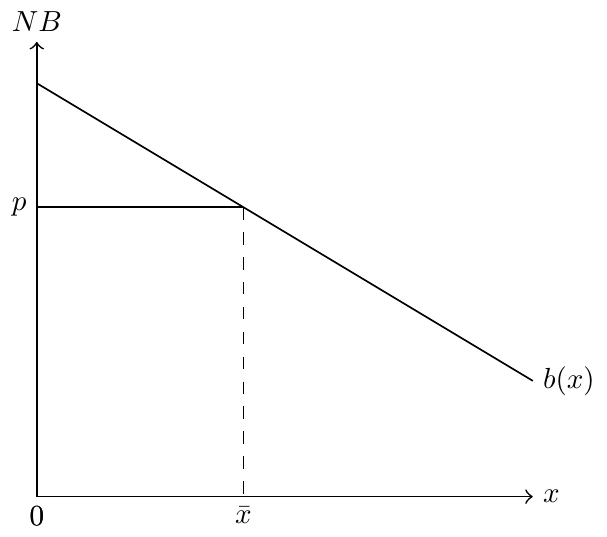Denote the quantity of care consumed by , and denote by the function that determinesthe benefit of care to the patient. Assume that the patient must pay the full price of care, , so that their net benefit is .
Question 1:
Find the patient’s optimal .
The patient just wants to maximize their net benefit, . Taking the derivative and setting to 0, this means (i.e., marginal benefit to the patient is equal to the patient’s marginal cost).
Question 2:
Draw the marginal benefit on a graph and note the price and patient’s optimal quantity.

Question 3:
Find the physician’s optimal assuming .
The physician is profit maximizing, subject to the constraint that . Plugging this constraint into the profit function yields, . Taking the derivative and setting it to 0 yields the expression, . So the physician also set’s marginal benefit equal to marginal cost…they just focus on their own marginal cost instead of the marginal cost to the patient.
Question 4:
Add the physician’s optimal to your graph and interpret the difference.


